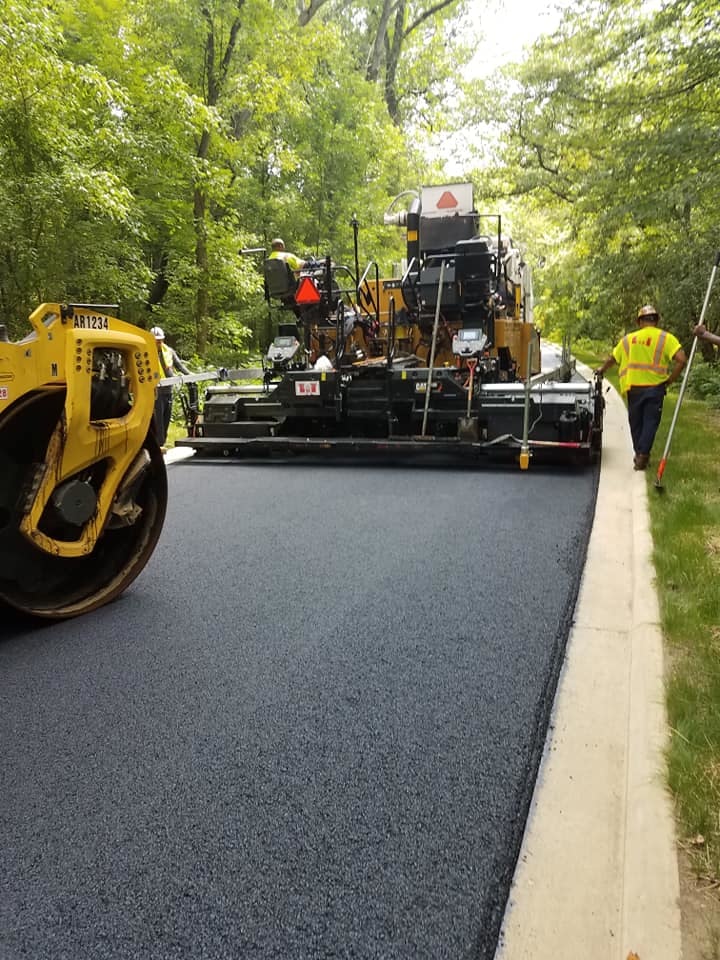Boost Curb Charm and Capability: Hot Mix Asphalt for Regrading Projects
Boost Curb Charm and Capability: Hot Mix Asphalt for Regrading Projects
Blog Article
Checking Out the Environmental Benefits of Warm Mix Asphalt
The application of Warm Mix Asphalt in infrastructure projects offers an engaging case for lasting development and environmental stewardship. By diving into the elaborate details of its manufacturing processes and the ingenious use recycled materials, a much deeper understanding emerges of just how this modern technology exceeds plain surface applications. The ecological advantages of Hot Mix Asphalt expand far beyond first perceptions, offering a nuanced viewpoint on exactly how this product can lead the way for a greener future.

Minimized Greenhouse Gas Emissions
Hot Mix Asphalt manufacturing offers a significant reduction in greenhouse gas discharges contrasted to other pavement materials. The production process of Warm Mix Asphalt includes warming the combination of aggregate and asphalt binder to high temperatures. This process needs much less power compared to the production of alternative pavement materials, resulting in lower greenhouse gas discharges. In addition, using recycled products in Warm Mix Asphalt better contributes to decreasing its ecological effect. By integrating redeemed asphalt sidewalk and recycled asphalt tiles right into the mix, the requirement for virgin materials is reduced, resulting in energy cost savings and lowered exhausts linked with removal and processing.
Studies have shown that Warm Mix Asphalt sidewalks have a smaller sized carbon footprint over their life process contrasted to other pavement options. The longevity and recyclability of Hot Mix Asphalt additionally enhance its ecological benefits by reducing the demand for regular maintenance or replacement, thus saving sources and decreasing emissions associated with reconstruction tasks.
Energy Efficiency and Preservation
The production procedure of Hot Mix Asphalt not just reduces greenhouse gas discharges but additionally contributes considerably to energy performance and conservation initiatives. Energy effectiveness is a crucial advantage of Warm Mix Asphalt production contrasted to other sidewalk kinds. The procedure includes warming the materials at high temperature levels to create the asphalt mix, which calls for less energy than different methods. Furthermore, the capacity to recycle and recycle asphalt pavement further improves power conservation. By incorporating redeemed asphalt pavement (RAP) right into brand-new blends, the industry conserves power that would have been required to generate entirely new products. The sturdiness of Warm Mix Asphalt lowers the regularity of maintenance and restoration, leading to long-term energy savings. This durability lessens the energy-intensive procedures associated with frequent repair services and substitutes. On The Whole, Warm Mix Asphalt stands out as an environmentally pleasant option that prioritizes energy efficiency and conservation throughout its lifecycle.
Lasting Sidewalk Solutions

One key aspect of lasting sidewalk services is the usage of recycled materials such as redeemed asphalt sidewalk (RAP) and recycled asphalt shingles (RAS) By integrating these materials into the asphalt mixes, the need for virgin resources is reduced, resulting in lower energy consumption and greenhouse gas discharges during production. Additionally, the reuse of these products assists divert waste from garbage dumps, adding to an extra circular and lasting economic climate.
Additionally, sustainable pavement solutions focus on optimizing pavement layout to boost efficiency and durability. Techniques such as warm mix check my source asphalt (WMA) and stone mastic asphalt (SMA) improve the durability and durability of pavements, decreasing the requirement for frequent repair services and substitutes. By implementing these cutting-edge techniques, facilities programmers can develop sidewalks that not only meet high-performance criteria but also reduce their environmental footprint.
Minimized Environmental Impact
Hot mix asphalt, in specific, offers a number of benefits that contribute to decreasing the general ecological impact of road framework. One crucial aspect is the recyclability of asphalt, which can be recycled multiple times without jeopardizing its top quality - Regrading.
Moreover, the manufacturing of hot mix asphalt discharges lower degrees of greenhouse gases contrasted to other pavement materials, making it an extra eco-friendly choice. The power efficiency of asphalt plants has likewise boosted for many years, leading to minimized gas consumption and lower discharges. Furthermore, the smooth surface area of warm mix asphalt decreases rolling resistance for lorries, causing lower fuel consumption and reduced air pollution from car exhausts.
Payment to Climate Adjustment Mitigation
Warm mix asphalt plays an essential role in mitigating environment change with its lasting residential or commercial properties and decreased environmental effect. One considerable payment to climate modification mitigation comes from the energy efficiency of warm mix asphalt production. Compared to various other sidewalk alternatives, the production process for hot mix asphalt takes in much less energy and discharges reduced levels of greenhouse gases, thus decreasing his comment is here its general carbon impact.
Moreover, warm mix asphalt's ability to mirror sunlight, called albedo, helps in reducing city warmth island impacts. By reducing heat absorption and retention, warm mix asphalt pavements can decrease the need for a/c in urban locations, as a result decreasing greenhouse gas exhausts associated with energy intake for cooling purposes.
In addition, the longevity and recyclability of hot mix asphalt even more boost its climate change reduction abilities. Regrading. The long life-span of asphalt pavements reduces the requirement for frequent repairs or substitutes, ultimately lowering the carbon emissions linked to roadway maintenance tasks. The recyclability of asphalt products reduces the need for virgin resources and reduces the ecological influence of sidewalk construction, lining up with lasting practices for climate adjustment mitigation.
Verdict
Finally, the ecological benefits of Hot Mix Asphalt show its substantial contribution to lowering greenhouse gas discharges, preserving energy, and reducing ecological influence. This sustainable pavement solution straightens with environment change mitigation initiatives, advertises source conservation, and boosts infrastructure growth. By utilizing recycled materials, energy-efficient production procedures, and sturdy style, Warm Mix Asphalt plays a vital role in fostering a much more eco pleasant strategy to infrastructure building and construction.
The production process of Hot Mix Asphalt involves heating the mix of aggregate and asphalt binder to high temperatures. By integrating recovered asphalt sidewalk and recycled asphalt roof shingles right into the mix, the requirement for virgin products is minimized, leading to power cost savings and lowered discharges associated with extraction and processing.
One key aspect of lasting sidewalk solutions is the usage of recycled products such as redeemed asphalt sidewalk (RAP) and recycled asphalt roof shingles (RAS) Techniques such as warm mix asphalt (WMA) and rock see page mastic asphalt (SMA) improve the longevity and strength of sidewalks, minimizing the need for frequent repair services and substitutes. Compared to various other sidewalk options, the manufacturing process for hot mix asphalt eats much less power and releases lower levels of greenhouse gases, hence lowering its general carbon footprint.
Report this page